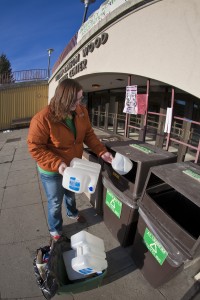UAF earns STARS gold rating for sustainability
September 2, 2011

907-474-7902
9/2/11
The University of Alaska Fairbanks has earned a gold rating in the Association for the Advancement of Sustainability in Higher Education’s evaluation program.
The program, called the Sustainability, Tracking, Assessment and Rating System, evaluates universities based on a variety of criteria, including education and research; operations; and planning, administration and engagement. Schools earn additional points for innovation. Four UAF efforts were recognized for their innovation:
• A program to install power-saver cords on UAF-affiliated vehicles.
• The Sustainability Art Show.
• A program that funds student-initiated sustainability efforts.
• A green talk radio show.
“This rating attests to the collaborative efforts made by our students, staff, faculty and community members to continue pioneering sustainable solutions,” said UAF Chancellor Brian Rogers. “We see STARS as a meaningful way to benchmark our progress for continual improvement toward sustainability and meeting future goals.”
The gold rating is the second-highest in the STARS scale. Platinum is the top rank available. The University of Alaska Anchorage also participated in the rating and earned a bronze rating. Nearly 265 higher education institutions are registered as STARS participants.
This program is open to all institutions of higher education in the U.S. and Canada, and the criteria that determine a STARS rating are transparent and accessible to anyone. Because STARS is a program based on credits earned, it allows for both internal comparisons as well as comparisons with similar institutions.
“We received astounding support from students, faculty and staff across campus to help us complete our report. This report highlights the amazing efforts of so many passionate folks from UAF,” said Michele Hebert, UAF sustainability director.
ADDITIONAL CONTACTS: Michele Hebert, 907-474-6085 or email mahebert@alaska.edu.
ON THE WEB: https://stars.aashe.org/institutions/university-of-alaska-fairbanks-ak/report/2011-08-26/
MG/9-2-11/052-12


